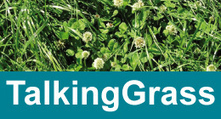Soil beneath grassland stores up to 70t/ha of carbon (25t/ha more than arable crops), and acts as a valuable sink for carbon dioxide, one of the gases on the climate change blacklist.
This was confirmed by Northern Ireland farmer Dr John Gilliland OBE last week, at the Malvern Farming Conference held at the Three Counties Showground.
He said that few carbon accounting systems allow for the significant amount of carbon that grass, hedges and trees capture and hold, which he believes has led to the widespread, yet misplaced criticism of ruminant agriculture in terms of their contribution to global warming.
“If the carbon balance sheet for the whole farm is considered, including the amount of carbon held in the soil under grass, ruminant production should not be under any threat,” he explained.
“In fact we need these animals to turn the protein in the grass that humans cannot eat, into edible protein that we can,” he said.
Pat on the back for farming
Dr Gilliland went on to say that the agricultural industry deserved congratulating, as it is the only sector of the economy that has reduced its greenhouse gas emissions over the past few years, mainly due to falls in nitrogen fertiliser use and animal numbers.
However, looking ahead the great challenge for farmers will be to find ways of increasing food production to meet projected population growth and demand, without reversing these trends.
Dr Gilliland suggests farmers will need to take a multifunctional approach to produce food which delivers a profit and sustainable agriculture.
One possible scenario for cattle and sheep farms could be to grow willow between the fields. This useful, local, non-fossil fuel, also helps keep water sources chemically and biologically clean, and captures carbon dioxide – helping offset some of the harmful emissions from the animals.
Source: http://www.talkinggrass.co.uk
This was confirmed by Northern Ireland farmer Dr John Gilliland OBE last week, at the Malvern Farming Conference held at the Three Counties Showground.
He said that few carbon accounting systems allow for the significant amount of carbon that grass, hedges and trees capture and hold, which he believes has led to the widespread, yet misplaced criticism of ruminant agriculture in terms of their contribution to global warming.
“If the carbon balance sheet for the whole farm is considered, including the amount of carbon held in the soil under grass, ruminant production should not be under any threat,” he explained.
“In fact we need these animals to turn the protein in the grass that humans cannot eat, into edible protein that we can,” he said.
Pat on the back for farming
Dr Gilliland went on to say that the agricultural industry deserved congratulating, as it is the only sector of the economy that has reduced its greenhouse gas emissions over the past few years, mainly due to falls in nitrogen fertiliser use and animal numbers.
However, looking ahead the great challenge for farmers will be to find ways of increasing food production to meet projected population growth and demand, without reversing these trends.
Dr Gilliland suggests farmers will need to take a multifunctional approach to produce food which delivers a profit and sustainable agriculture.
One possible scenario for cattle and sheep farms could be to grow willow between the fields. This useful, local, non-fossil fuel, also helps keep water sources chemically and biologically clean, and captures carbon dioxide – helping offset some of the harmful emissions from the animals.
Source: http://www.talkinggrass.co.uk

No comments:
Post a Comment